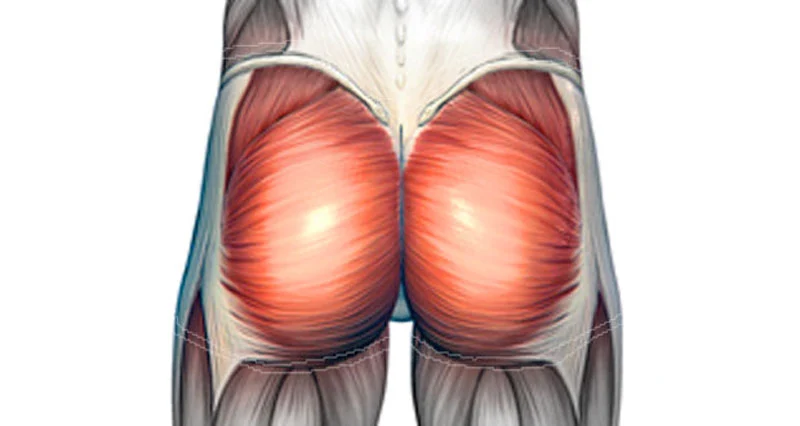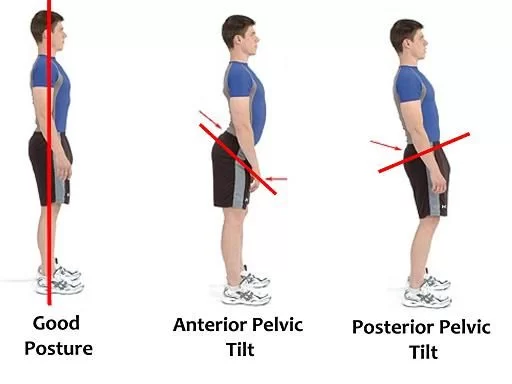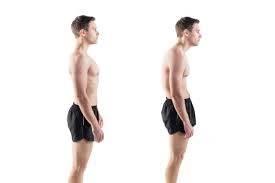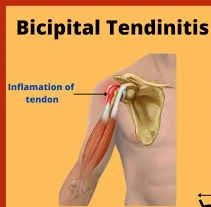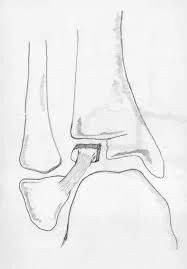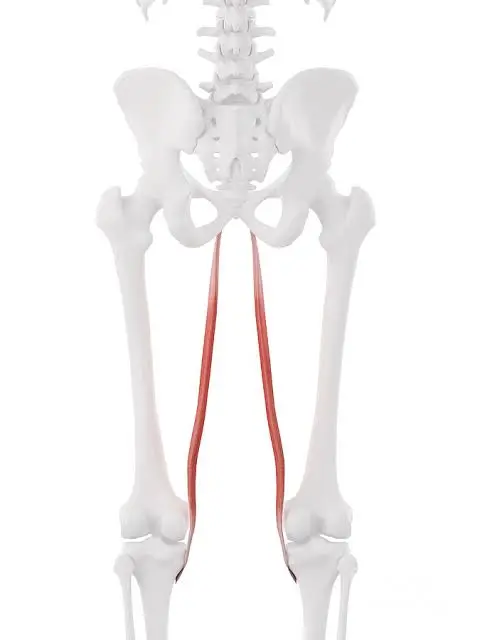Muscle Soreness In The Buttocks
Table of Contents
What is Muscle Soreness In The Buttocks?
Muscle soreness in the buttocks, often referred to as gluteal soreness, is a common and often uncomfortable sensation experienced by many individuals. This discomfort typically arises as a result of various factors, such as physical activity, prolonged sitting, or underlying medical conditions.
Understanding the causes, symptoms, and management of buttock muscle soreness is essential for maintaining overall well-being and addressing potential underlying issues.
Numerous factors, including traumas, overuse conditions, and nerve compression, can contribute to buttock soreness. It’s essential to identify the underlying reason, seek the right therapy, and stop your problem from growing worse since buttock soreness can greatly affect your capacity to sit, stand, or walk.
In this comprehensive guide, we will explore the causes and contributing factors, symptoms, and effective strategies for alleviating and preventing muscle soreness in the buttocks.
Is this reason in concern?
You may not have paid much consideration to your buttocks because they are behind you. But you will be aware if they start to hurt. Although they are primarily made of fat and gluteal muscle, your buttocks are nonetheless susceptible to injury and illness.
Minor muscular strains to infections are just a few of the problems that can cause pain in the buttocks. While the majority of these issues are not serious, some of them demand a trip to the doctor. Call and make a time. If the pain doesn’t go away, worsens, or you additionally experience the following signs:
Numbness or weakness in your leg issues with bowel or bladder control an unhealing sore severe or shooting pain
A temperature of 104°F (40°C) or higher, along with movement-restricting pain that only occurs when you’re walking
Below are some medical conditions that might hurt your buttocks, along with advice to help you identify which one you may have.
Causes of Muscle Soreness In The Buttocks
Sacroiliac joint pain
The Sacroiliac joint is situated near the base of the back, close to the side. With the following signs and symptoms of inflammation:
- sudden, severe joint ache
- lower back pain that radiates and hurts the buttocks
- Numerous factors, such as a traumatic impact, poor biomechanics, an inflammatory condition, or pregnancy, might contribute to sacroiliac joint discomfort.
Piriformis syndrome
The discomfort from piriformis syndrome can go down the leg and into the buttocks. Deep in the buttocks, the Piriformis muscle puts pressure on the sciatic nerve.
- Buttock pain
- Pain can extend into the calf muscles and the back of the leg.
- More on Piriformis syndrome
- Advert
- foam rollers
- Foam Rollers
Hamstring tendonitis
Inflammation or degeneration of one of the hamstring tendons at the location where it joins to the pelvis is known as hamstring tendinitis.
- It might be the result of an unhealed hamstring tendon tear or could simply be the result of overuse.
- Pain may progressively worsen, especially after working out.
- The hamstrings will probably hurt when you stretch them. Sciatic pain results from irritation of the sciatic nerve in particularly chronic situations.
Ischiogluteal bursitis buttock pain
Bursitis involving the ischio-gluteal region
Ischiogluteal bursitis is an inflammation of the bursa that sits between a hamstring muscle’s ischial tuberosity and its tendon. The tendon and bone may move more easily together thanks to a bursa.
When the bursa is painful and inflamed, the symptoms are quite similar to those of hamstring tendonitis.
The top of your back thigh, right below the buttock crease, is where the pain is.
It could hurt to stretch the hamstring muscles.
A hamstring strain or tendon damage might cause it.
Prolapsed disc (slipped disc)
Disc prolapse results in buttock soreness.
Anywhere along the spine can experience a herniated disc, slipped disc, or prolapsed disc, but the lower back is where they most frequently occur.
These signs include:
- Back pain.
- Leg pain.
- Neural (nerve) related symptoms.
- Bowel and bladder problems.
- Surgery or rest and exercise may be necessary in some circumstances as part of the treatment.
Hamstring/Pelvic avulsion fracture
From hamstring avulsion, buttock soreness
When the tendon separates from the bone, frequently dragging a portion of bone along with it, it causes a pelvic avulsion fracture. This most frequently happens where the hamstrings connect, near the ischial tuberosity.
These signs include:
- Sudden discomfort, frequently during a strong, forceful movement.
- You feel pain in the buttock crease at the rear of your pelvis.
- When doing specific motions, such as running, squatting, or leaping, you will experience discomfort and weakness.
- There may be edema and bruising.
Myofascial buttock pain
Buttock discomfort may be brought on by trigger points or myofascial pain in the Gluteus medius and/or Piriformis muscles.
- A small, localized knot in the muscle is known as a trigger point.
- It will hurt in the lower back or buttocks, and it can extend to other places.
- Stretching and massage can ease the difficulty of movement around the hip.
Referred buttock pain (from the Lower back)
Even if there is no evident lower back pain present, discomfort in the buttocks may be referred to as lower back issues. This might occur due to a variety of issues, including:
- ‘Slipped’ or prolapsed discs.
- Spine’s joints pressing against a nerve.
- The buttocks may experience a deep, widespread ache that can range in intensity from mild to severe.
- The slump test is done to determine whether the buttock discomfort is coming from the sciatic nerve.
Buttock pain from contusions
A buttock contusion involves bleeding into the muscles brought on by a direct blow or other trauma. This may result after a fall or by being struck in the region by a hard, blunt item like a ball or even an opponent. These signs include:
Upon impact, there was soreness in the buttock. Obvious soreness while sitting down or applying pressure on the muscles. When exercising and extending the buttock muscles, bruising, discomfort, and stiffness may be experienced. Rest and the PRICE protocol are part of the healing process.
For 15 minutes each time, apply ice or other cold treatment items to reduce the discomfort, bleeding, and swelling.
Stretching the glute muscles out slowly should begin once it is comfortable to do so.
Sports massage can relieve tension and spread waste materials, but it shouldn’t be done within 72 hours of an injury since it may increase blood flow. Foam Rollers
Compartment syndrome
When a muscle expands up too much for its sheath, chronic compartment syndrome develops.
- Muscle discomfort is one of the symptoms, particularly during activity when the muscles contract to regulate blood flow.
- This is extremely uncommon but might occur, especially after a muscular strain or prior injury, in the muscles towards the rear of the leg and buttock.
Stress fracture of the sacrum
Sacral stress fractures are uncommon and most frequently impact female long-distance runners. These signs include:
- Vague buttock or lower back ache on one side
- Weight-bearing exercises like jogging make pain worse
- Tenderness on the actual bone
- Rest or non-weight-bearing activity is prescribed as treatment, generally for a few weeks. Then, rather than immediately returning to full exercise, a gradual return to training is crucial.
Be aware that a variety of unusual illnesses might go undiagnosed while determining the cause of buttock discomfort. These consist of:
- Spondyloarthropathies.
- Tumors.
- Infections of bone and joint.
Sciatica
Sciatica is a symptom, not a disease. The sciatic nerve, which travels from your lower back through your buttocks and down each leg, causes a severe or burning pain that passes down each leg.
Numbness or tingling may also be present in the afflicted leg. These movements might provide you with some relief.
A herniated disc or the narrowing of certain areas of the spine may trigger sciatica by placing pressure on the sciatic nerve. Because the diseases that cause sciatica grow more prevalent as you age, you are more likely to get it in your 40s and 50s.
Although studies on the prevalence of the condition differ, some experts believe that up to 40% of people have had sciatica.
Pilonidal cyst
A cyst is a hollow sac that can develop in different areas throughout your body. In contrast to other cysts, a pilonidal cyst includes tiny pieces of skin and hair. The crevice between the buttocks is where these cysts develop. If a hair grows inwards into your skin (ingrown hair), you might develop one of these cysts.
You could notice in addition to the pain:
pus or blood flowing from the incision, reddish skin, and an unpleasant odor
Men, as well as those who spend a lot of time sitting still, are more likely than women to develop a pilonidal cyst. They can also be acquired from friction, such as while riding a bike.
Perirectal abscess
A pus-filled cavity known as a perirectal abscess (also known as a perianal abscess) develops in a gland next to the anus, the anus through which excrement exits your body. A bacterial infection is what leads to the abscess.
Babies frequently develop this kind of abscess. Adults who experience diarrhea, constipation, or another bowel movement issue are more prone to get an infection.
Some people have an unusual connection that connects the epidermis and the inner part of their anus. It is known as a fistula. An abscess can develop if bacteria become entrapped in this passageway. For the fistula to be removed, your doctor could advise surgery.
Arthritis
Your joints might become painful and stiff as a result of arthritis. There are roughly 100 distinct forms of arthritis, and more than 54 million Americans are affected by it.
Some kinds are brought on by the joints’ progressive deterioration with time and use. Others result from a combined immune system attack.
Hip joint arthritis might result in aches that spread to the buttocks. As you move the joint, the pain and stiffness may initially be severe in the morning. Physical therapy and medication are both capable of helping with pain management.
Vascular disease
The principal blood artery leaving the heart is the aorta. It divides into two progressively smaller blood vessels known as the iliac arteries, which provide blood to the legs. Buttock discomfort may result from a blockage in these blood arteries brought on by atherosclerosis.
Walking might cause discomfort, which can be achy in character. You might have to quit walking as a result, and then the discomfort will go away.
In the lower legs, there may also be thinning hair and weakness.
Symptoms of Muscle Soreness In The Buttocks
Muscle soreness in the buttocks can manifest with various symptoms, and these sensations can range from mild discomfort to significant pain. Here are some common symptoms associated with buttock muscle soreness:
- Localized Pain: The most prominent symptom is often localized pain in one or both buttocks. This discomfort can range from a dull ache to sharp, stabbing pain.
- Tenderness: The affected area may feel tender to the touch, making sitting or applying pressure painful.
- Stiffness: Sore buttock muscles can lead to stiffness in the lower back, hips, and thighs, affecting mobility and flexibility.
- Difficulty Sitting: Sitting for extended periods may become uncomfortable or painful, making it challenging to perform tasks that require prolonged sitting, such as working at a desk or driving.
- Radiating Pain: In some cases, buttock muscle soreness can cause pain to radiate down the back of the leg, a symptom commonly associated with conditions like sciatica.
- Swelling and Inflammation: Inflammation of the affected muscles can lead to localized swelling and warmth in the buttock area.
- Reduced Range of Motion: Muscle soreness can limit your ability to move the hip and leg freely, impacting activities like walking, climbing stairs, or bending over.
- Muscle Fatigue: Soreness often coincides with muscle fatigue, making it challenging to engage in physical activities that require strong gluteal muscles.
- Muscle Tension and Knots: You may notice areas of tension or knots within the buttock muscles, which can contribute to discomfort.
- Pain with Specific Movements: Certain movements or activities, such as squatting, lunging, or running, may exacerbate the soreness and cause increased pain.
It’s important to note that buttock muscle soreness can have various underlying causes, including overuse, muscle strain, poor posture, nerve compression, or underlying medical conditions like sciatica or piriformis syndrome. Identifying the specific symptoms you are experiencing and their duration can help determine the cause and guide appropriate treatment or management strategies.
Diagnosis of Muscle Soreness In The Buttocks
A healthcare professional will do a physical examination and inquire about your medical history, including how and when your symptoms first appeared, in order to determine the source of your buttock discomfort.
Your doctor may suggest imaging tests to identify the underlying cause of your buttock soreness depending on the severity of your issue.
Medical History
You will go through your medical history with your healthcare practitioner when you see them. This will involve going over any health issues you may have and talking about how and when your buttock discomfort first appeared.
Inquiries concerning your condition that may be asked by your healthcare professional include:
- Do you also have any other symptoms, such as tingling, numbness, swelling, burning, or muscular weakness, in addition to the pain?
- Has the feeling of discomfort increased over time?
- Do various postures, such as sitting, standing, or bending, cause discomfort or make it worse?
- Did you recently suffer from or have a hip or back injury?
- Do you experience any bowel movement issues?
- If you recently had an illness or suffer odd symptoms like fever, exhaustion, or unexplained weight loss, be careful to let your healthcare professional know since these indications may indicate to an uncommon systemic issue causing your buttock soreness.
Physical Examination
Your healthcare practitioner will do a physical exam to check your buttocks and surrounding regions, including your hips and spine, after going over your symptoms and medical history. To determine whether your range of motion is limited or uncomfortable, your healthcare professional will examine, touch, and move your hips and legs in addition to your buttocks and thighs.
Your medical professional will search for indications of: during your physical examination.
- Redness
- Swelling
- Tenderness
- Bruising
- Numbness
- Abnormal joint alignment
Imaging
The structures in and around your spine, hip, and sacroiliac joints may be examined using imaging techniques to look for injury. X-rays are frequently used as a first step to look for arthritis or damaged bones.
You could get an MRI (magnetic resonance imaging) if a sprain, tear, tendinitis, or bursitis is suspected in a tendon or ligament. Your spine may also be examined with an MRI to look for abnormalities such as spinal stenosis, ruptured or bulging discs, and nerve root compression.
Nerve Conduction Study
If your doctor believes nerve compression or injury is the root of your buttock soreness, he or she may do a nerve conduction test to look at how well your nerves are working. You will receive brief electrical shocks while having electrodes attached to your skin during this examination. In order to detect faulty nerve functioning, this test will examine the speed at which your nerves transfer messages.
Treatment of Muscle Soreness In The Buttocks
The intensity of your symptoms and the available treatments will depend on the underlying reason for your buttock discomfort. Although surgery may be required for severe or persistent injuries, many causes of buttock pain can be treated conservatively with medication, physical therapy, and at-home remedies.
Lifestyle Treatment Options
Buttock soreness may be treated at home using easy techniques. These consist of:
- Using heat or ice to relieve pain
- topical creams or gels for pain relief
- You should gently stretch your hip muscles.
- taking a break from strenuous activity like jogging, exercising, or extended sitting, standing, or walking
- Use a specialized seat cushion to alleviate strain on your tailbone and rectal region
- Changing your diet might help you have more regular bowel movements.
Medications
You can take drugs to assist in lessening your discomfort if necessary. Painkillers can be used orally, such as nonsteroidal anti-inflammatory medicines (NSAIDs) sold over the counter or stronger opioids prescribed by a doctor, or they can be injected with steroids into your hip or spine.
Physical Therapy
Physical therapy serves as essential for dealing with many buttock pain sources. Your physical therapist will design a personalized workout regimen for you to assist in loosening up too-tight muscles and increase your strength, which may be used to balance out your muscles.
To lessen your discomfort, a physical therapist may also apply manual treatments and therapies such as heat, cold, or electrical stimulation.
Surgery
Surgery can be a possibility if your buttock pain is severe and stems from spinal issues such as spinal stenosis or herniated discs that limit your ability to stand and walk without soreness. However, after attempting various treatment options for a few weeks or months, surgery is only then taken into consideration.
Laminectomies, which clear space in the spine by removing bone spurs and tissue, foraminotomies, which increase the region around a spine bone, and spinal fusions, which permanently join two or more vertebrae in your spine, are all spinal surgical procedures that can help lessen nerve compression and buttock pain from spinal disorders.
How to Prevent Muscle Soreness In The Buttocks?
The majority of physical difficulties originating from overuse, muscular imbalances, or long-term joint disorders are what cause buttock discomfort. Regular exercise can help reduce the chance of injury by strengthening the muscles that surround your buttocks, such as your glutes, hamstrings, and abdominals.
Starting a new fitness regimen or increasing your physical activity should always be done gradually to give your body time to adapt to the increased physical demands. You should also see your doctor to make sure you are healthy enough to exercise.
Overview
Osteoarthritis, sciatica, piriformis syndrome, sacroiliac joint dysfunction, hamstring tendonitis, trochanteric bursitis, coccydynia, and hemorrhoids are just a few of the many possible reasons for buttock soreness.
The majority of buttock pain reasons are treatable with at-home remedies, physical therapy, and, if necessary, medication. In some cases of severe or persistent buttock pain brought on by spinal conditions including spinal stenosis or ruptured discs, surgery may be necessary if symptoms don’t go better with non-surgical treatments.
Even if your buttocks are already aching, you may avoid symptoms by limiting repetitive strain on your hips, addressing muscular imbalances, and taking time away from aggravating activities.
FAQs
Piriformis syndrome is brought on by the sciatic nerve being compressed by the piriformis muscle, which results in inflammation. It may result in numbness or discomfort running down the back of your leg and into your buttocks. Either one or both of your body’s sides may be affected. The flat, slender piriformis muscle is.
Causes of buttock pain and the best treatments available in 2023 Both a minor condition that might resolve on its own and a serious one requiring immediate medical intervention can cause buttock discomfort. You should have the discomfort in your buttocks evaluated by a doctor if it is severe and ongoing.
The buttock area is made up of a group of muscles called the gluteal muscles, which comprise the gluteus maximus, gluteus medius, and gluteus minimus. The shape and structure of the buttock and hip region are mostly determined by the gluteus maximus, which is the biggest and most superficial of the three muscles.
Your piriformis muscle will become more relaxed during a massage, which will help to prevent spasms and relieve strain on your sciatic nerve. A massage encourages the release of endorphins, which block pain and lessen piriformis syndrome symptoms.
What causes deep buttock soreness, and how can you treat it?
Important information regarding the cause of soreness can be obtained by palpating the spine and buttocks. Tests often assist in validating a diagnosis. For instance, X-rays and ultrasounds can reveal alterations in the tendons, sacroiliac joint, and hip. However, the best tool for identifying gluteal muscle soreness is a high-quality MRI scan.

